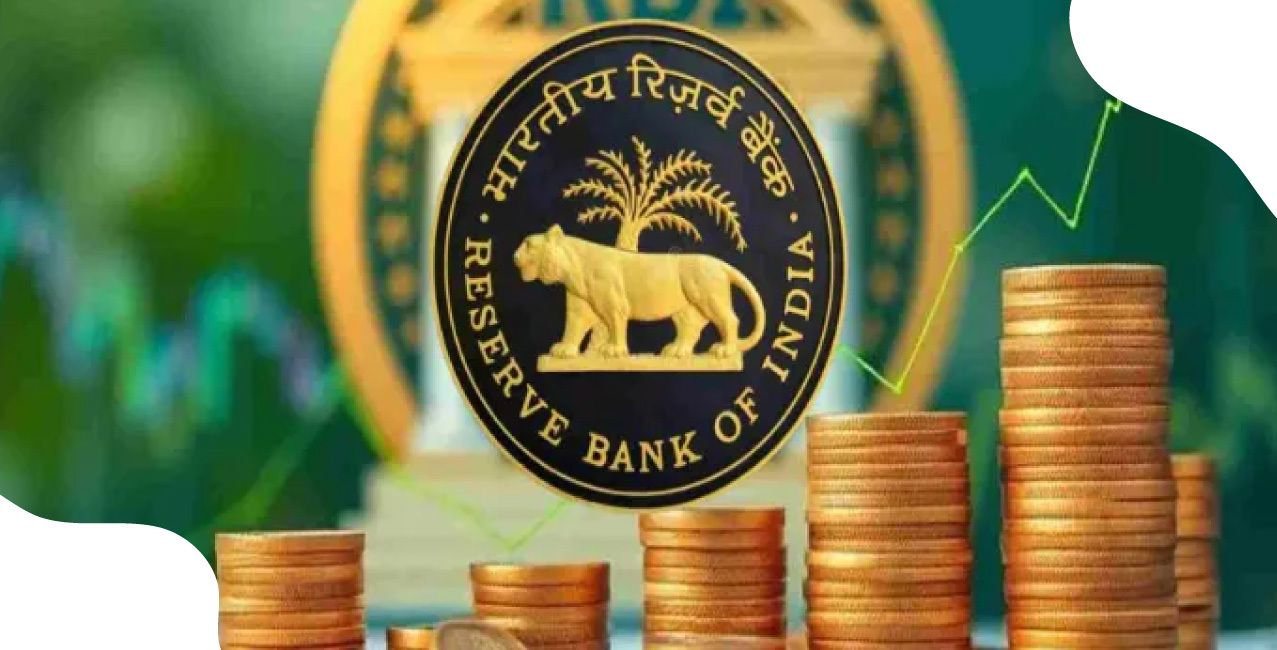
Author
LoansJagat Team
Read Time
4 Min
07 Oct 2025
Why Are Former RBI Officials Warning Against Easing Banking Rules – Updated Insights
Experts warn that rules made to support growth should not weaken the safety measures that protect India’s banking system.
When a rule bends, a question arises: Will it strengthen the system or weaken it over time? The Reserve Bank of India (RBI) has again turned heads with its latest move. In September 2025, the RBI Monetary Policy Report announced a series of regulatory relaxations aimed at supporting credit expansion.
While many see this as a boost for growth, former RBI officials have voiced caution. They warn that easing of banking sector rules must be matched with strong supervision to prevent future financial stress.
According to official data, the RBI imposed 36 monetary penalties in May 2025 on cooperative and urban banks for non-compliance. The number shows that oversight continues even as rules loosen. But for some, this dual stance, discipline and relaxation brings unease.
RBI Banking Regulation Changes: The New Shift in Focus
The latest RBI banking regulation changes are part of a broader effort to improve liquidity and speed up credit delivery. These rules reshape how banks handle provisioning, lending, and compliance.
These steps reflect a softer regulatory approach. They aim to support infrastructure projects and fintech expansion while maintaining financial system stability. But many former officials worry the RBI might be taking comfort in short-term growth.
The last time such wide relaxations were introduced, in 2013, under similar inflation and credit pressures, the system later faced a rise in non-performing assets (NPAs).
India Central Bank Policy Update: Between Growth and Prudence
The Indian central bank policy update released after the September 2025 Monetary Policy Committee (MPC) meeting shows a clear tilt toward growth. The RBI retained the repo rate at 6.25%, citing moderate inflation and stable GDP growth near 6.8%.
Loan growth has touched nearly 10.2% on a yearly basis, as per the RBI Financial Stability Report (June 2025). Gross NPAs across scheduled commercial banks stand at 2.9%, the lowest in more than a decade. These figures gave policymakers some room to relax norms, especially in project finance and lending to priority sectors.
However, former RBI officials warn that relaxing too early can invite risks. Former Deputy Governor Viral Acharya, in a financial forum in August 2025, said, “Regulation is like a seat belt. It does not slow the car, but it keeps you safe when the road turns.”
This pattern shows that easing credit rules often brings short-term relief but can plant seeds of future strain.
The RBI says the relaxations are temporary and will be reviewed in the next Financial Stability Report (December 2025).
How Easing of Banking Sector Rules Connects to Past Stories
In June 2024, LoansJagat reported in “RBI Tells Banks, Lenders To Stop Charging Pre-Payment Fees On Business Loans To Individuals, MSMEs” that the central bank was taking steps to make borrowing easier for small businesses. At that time, the rule change helped micro and small enterprises get cheaper and more flexible loans.
The current easing now goes beyond MSMEs. It covers infrastructure projects, digital lenders, and large corporate borrowers. This shows how RBI’s approach has widened from supporting small firms to improving credit flow across the whole economy..
The difference this time lies in scale. The 2025 reforms affect almost every sector tied to bank credit. That makes the warnings from ex-officials more relevant. They argue that the economy’s current strength may mask underlying credit stress that could reappear later.
Former RBI Officials Warning: What They Fear
The former RBI officials' warning is not about opposing growth. They argue that a stable banking system cannot depend solely on good times. Their concern is that the RBI’s recent moves, though aimed at growth, might reduce the capital cushion that guards against future shocks.
A few of them, including former Deputy Governor R. Gandhi, have urged stronger stress tests before easing rules. They suggest linking any relaxation to real data on bad loans and liquidity risk.
This view supports a more disciplined structure, where every policy relaxation is time-bound. It also pushes for transparency similar to that of advanced Asian economies.
Many experts believe such mechanisms can help India avoid the credit bubbles that often follow easing cycles.
Conclusion
The RBI’s new banking regulation changes aim to fuel growth in infrastructure, MSME, and digital lending. They are part of the broader India central bank policy update that reflects optimism about the economy’s momentum.
Yet the former RBI officials' warning cannot be ignored. They remind the public that the stability of India’s banking system rests on careful balance, not enthusiasm alone.
The coming months will show whether this phase of easing of banking sector rules strengthens the economy or strains the system again. Until then, RBI monetary policy caution remains the thin thread holding confidence together.
About the Author

LoansJagat Team
‘Simplify Finance for Everyone.’ This is the common goal of our team, as we try to explain any topic with relatable examples. From personal to business finance, managing EMIs to becoming debt-free, we do extensive research on each and every parameter, so you don’t have to. Scroll up and have a look at what 15+ years of experience in the BFSI sector looks like.

Quick Apply Loan
Subscribe Now
Related Blog Post

LoansJagat Team • 10 Jun 2025

LoansJagat Team • 06 Jun 2025

LoansJagat Team • 22 Sep 2025